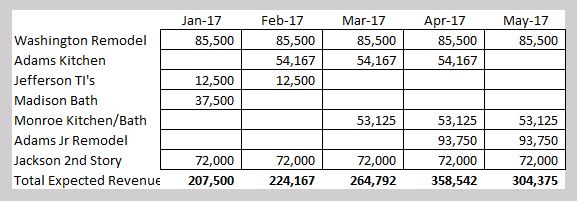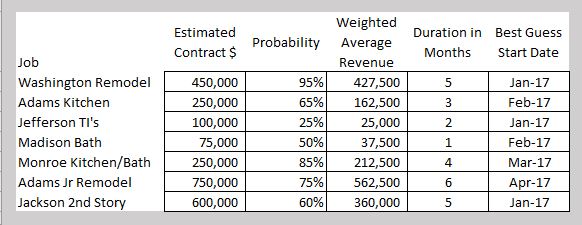A recent article written by Craig Webb in Remodeling, Remodeling 550 Data Shows Revenue Forecasts Often Go Wildly Off Target, was not surprising but could be considered alarming. Why do remodelers have such trouble forecasting revenue? And why should this be of concern?
When reviewing financial statements, it’s important to look at gross profit as a percentage of income (called gross margin), but also analyze overhead in terms of raw dollars. That’s because overhead dollars should be consistent over time, even with fluctuating revenue. And the higher the revenue, the more gross profit dollars are produced to cover the overhead expenses and leave more for profit. Problems occur when income is less than expected, and gross profit dollars fail to cover overhead expenses.
But forecasting revenue can be difficult. For example, you may have a signed contract to start a large job lasting six months, and the start date gets pushed out several months because of permit or design issues. Or one project has many change orders and prevents you from starting the next job on time. What do you do about all those proposals you created when you are waiting to see if they turn into actual jobs?
One way to forecast revenue is to create a weighted average spreadsheet, shown in Table 1 below.
First, list all the jobs that may be starting in the next six months. Assign a probability for each job based on how confident you are about the final price and start date. Then you can create a weighted average revenue (WAR) by multiplying the estimated contract by the probability. Finally, guess as to the duration in months and possible start date and add that to your spreadsheet.
The weighted average revenue divided by the duration provides the estimated potential monthly revenue. You can then assign it to the months that the job may take place, as seen in Table 2.

Table 2
Once you do this, you can plan ahead to move jobs, crews, and subcontractors to create a more realistic schedule. You can also use this to fit in the small jobs that may have more flexibility. Finally, you can use the monthly expected revenue to measure your progress against your total sales goal for the year.
While forecasting is really only a guessing game, playing the game using weighted averaging is a smart way to tackle this problem
